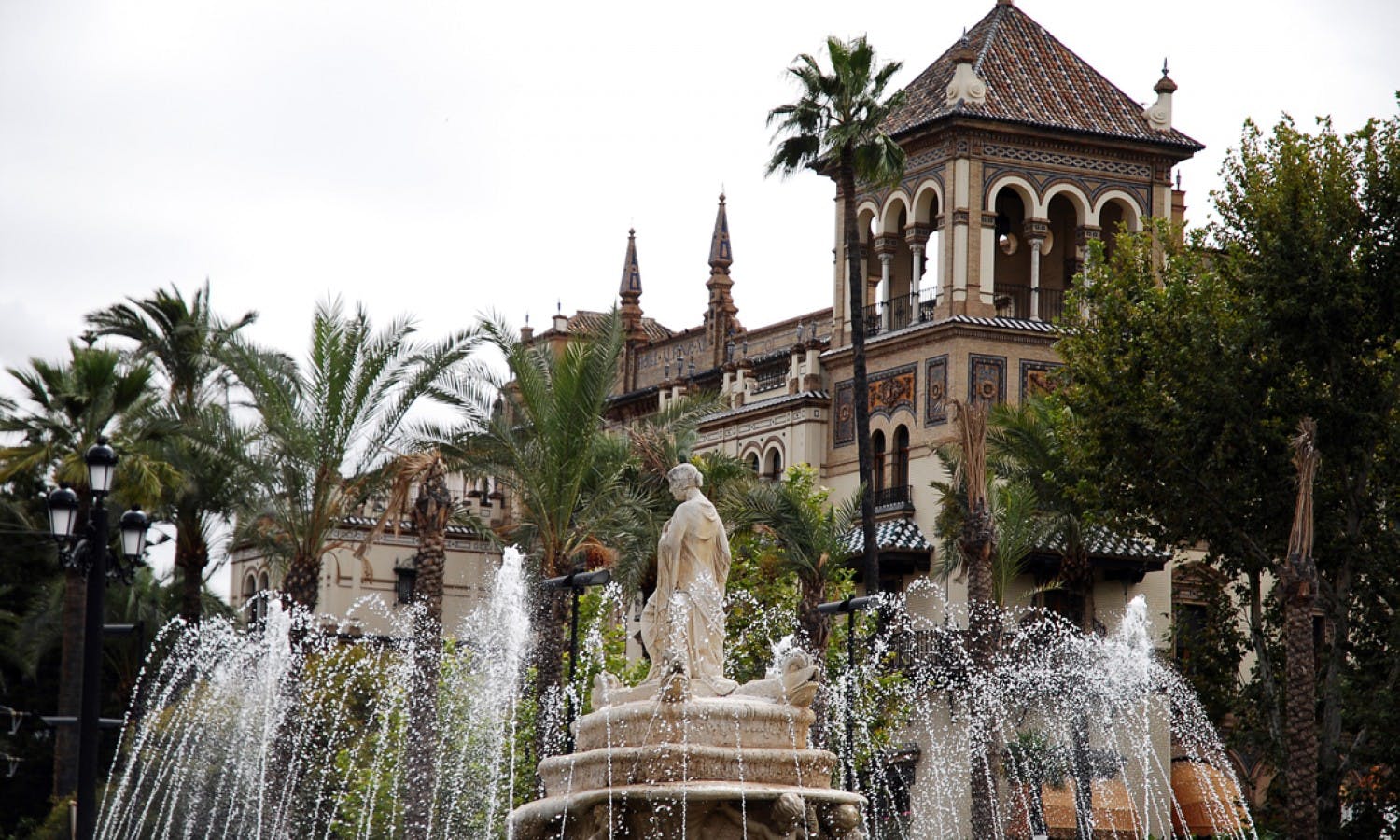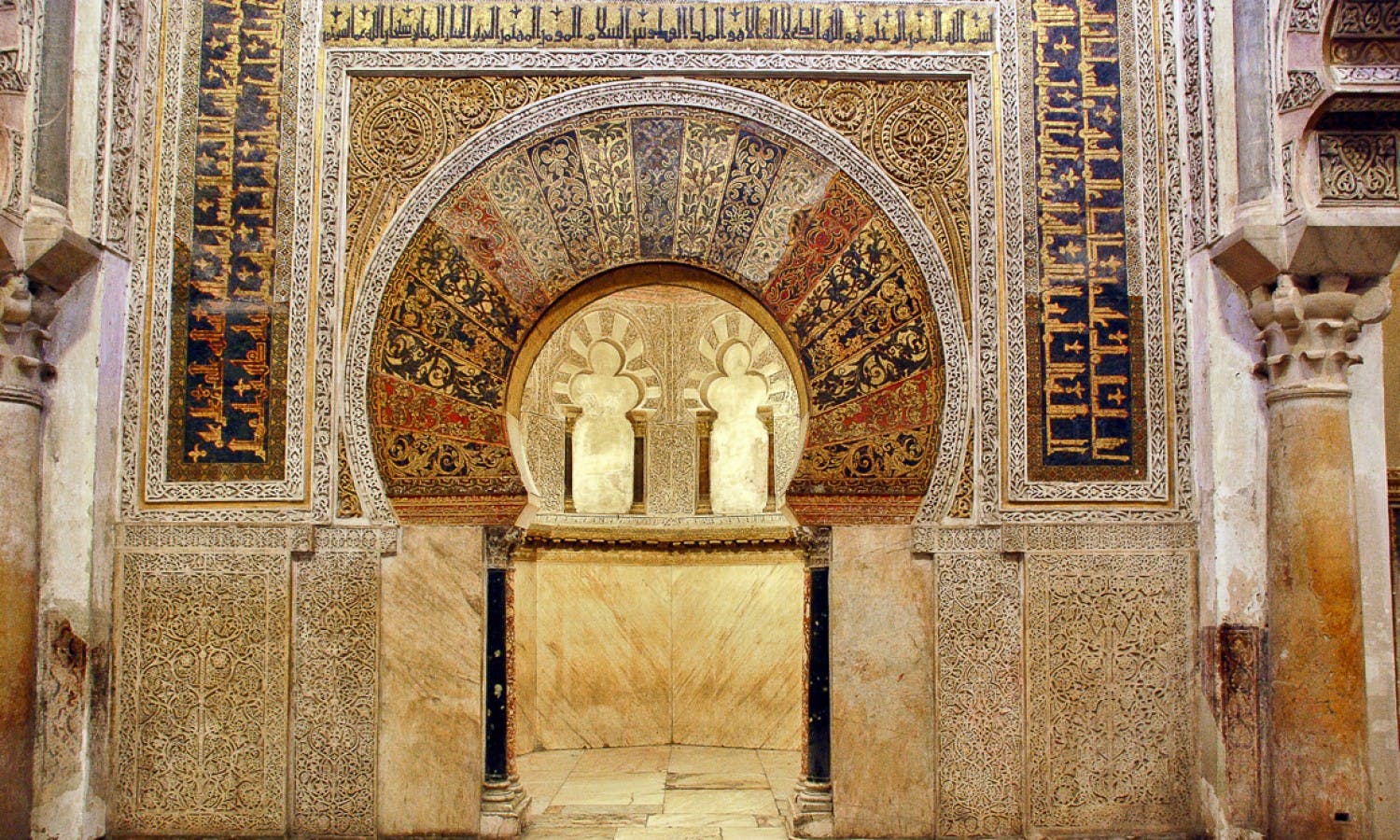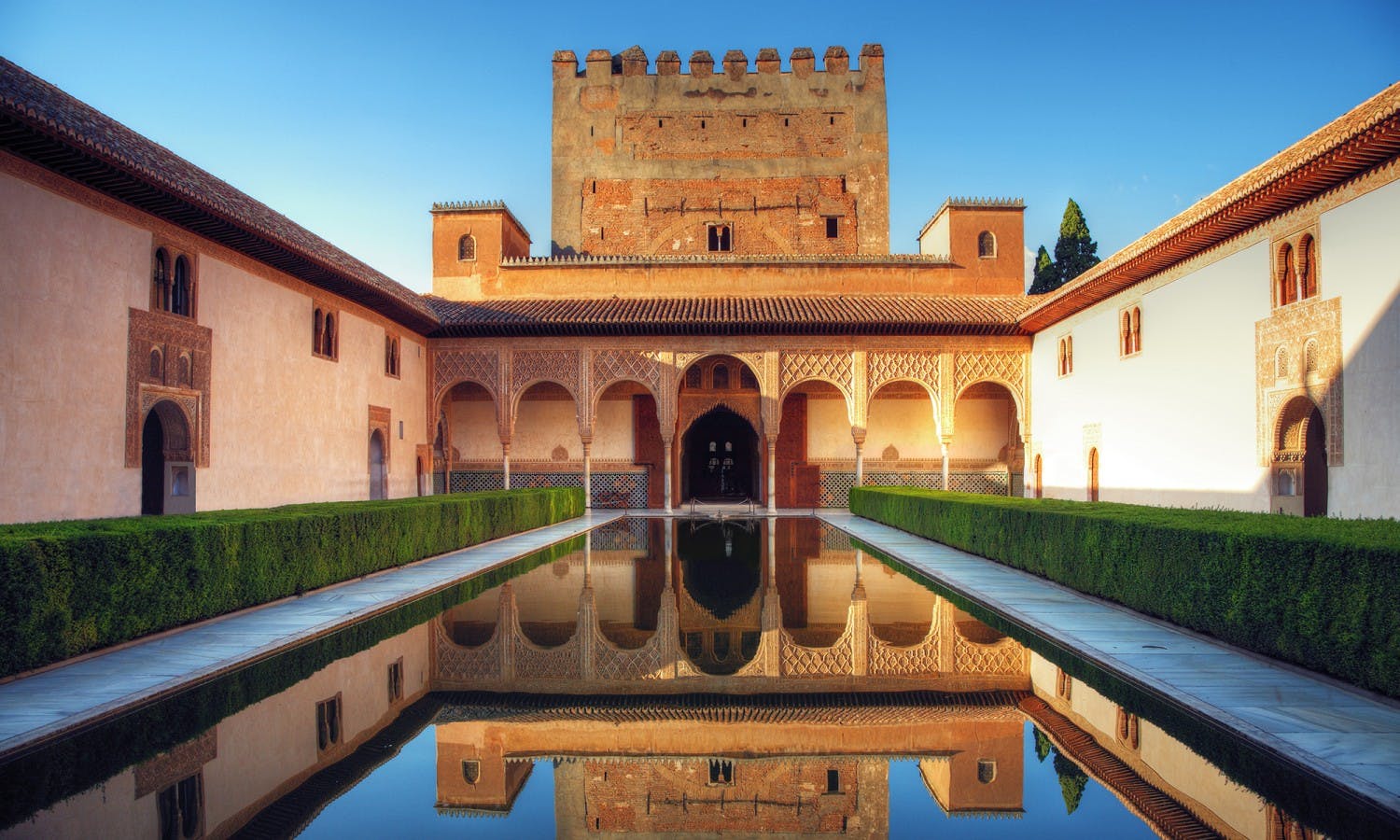Stunning Moorish architecture merges with the Catholic Church spires, coloured tiles frame Christian iconography, incredible palaces come to life with the sound of Flamenco. Discover the Moorish heritage of Andalusia in the Golden Triangle.
The Moorish occupation of Spain began in 711 AD when an African army, under their leader Tariq ibn-Ziyad, crossed the Strait of Gibraltar from northern Africa and invaded the Iberian Andalus peninsula. Thus began the longest occupation of anywhere in Europe by Muslims. As well as contributing to Southern Spain’s stunning cultural and architectural landscape, this 800-year long occupation resonated across Europe bringing about scientific progress in astronomy, chemistry, physics, medicine and mathematics. The Moors introduced the Europeans to paper and Arabic numerals, which replaced the Roman system. They also introduced crops such as oranges and lemons, saffron and dates as well as a network of learning centers with universities in Almeria, Cordova, Granada, Jaen, Malaga, Seville and Toledo.
Taking a trip around the region is a unique way to experience the merging of cultures and to witness the rich heritage of a land that has been conquered and loved by many. From Roman ruins to Moorish fortresses and grand Renaissance Churches, Andalusia is a unique destination for the discerning traveler with a passion for medieval architecture.
Seville
Seville is the capital of Andalucía, the home of flamenco, and the finest exponent of the Mujedar architectural style. With so many beautiful Moorish buildings to list its hard to know where to start. The Alcázar of Seville, the royal palace and gardens, is one of the most beautiful examples of the style of architecture. It is Europe’s oldest royal palace still in use and it became a UNESCO World Heritage site in 1987. Another fun fact: it served as the location for the Dorne on Game of Thrones.
For a more modest yet stunning example of Mudejar architecture, the Casa de Pilatos, offers a glimpse of what it might have been like to live in one of these stunning palaces. The Giralda tower is the most emblematic landmark of Seville and measures 93 m high, was constructed by the Sultan of Maroc in 1184. It was the minaret of the old Almohad mosque of the city. The tower has four external and four internal walls, and between them is a spiral sloping ramp that goes up to the terrace. This allowed the sultan and the muezzins to go up the tower on a horse. The Giralda is now the bell tower for the Cathedral of St. Mary which was built between 1401 and 1519 on the former site of the city’s mosque. Last but by no means least take a trip further out of the center of town near the river where you will find the Torre del Oro which was built by the Almohad dynasty as a watchtower and defensive barrier on the river.

Seville
Cordoba
Córdoba is an ancient center of culture and learning. Initially founded by the people inhabiting the Iberian Peninsula, it then became a Roman trade center and then in the Middle Ages the capital of an Islamic caliphate. It is thought that in the tenth and eleventh centuries, Córdoba was the world’s most populous city. It became the intellectual center of Europe and due to its status as a capital, there are of course many Mudejar style buildings to discover. The Mezquita, the great mosque which dates back to the 10th century, is a must-see. It is instantly recognisable by alternate brick and stone horseshoe arches on top of stone pillars, also converted into a Cathedral in the wake of the Reconquista, this building is arguably one of the most significant of its style. Cordoba, of course, has its own Alcazar (of the Christian Kings), though its Moorish features are less evident. The castle’s gardens retain a Mudejar style, yet the Moorish bathhouse has remained almost intact. A stone’s throw from the city center is Madinat al-Zahra, a restored Moorish city. Here you can take a step back in time and imagine once the opulence and grandeur of the complex with its verdant gardens, bronze griffins, lions and horses, marble fountains and stunning reception halls.

Córdoba
Granada
One of the most important examples of Mudejar architecture is located in Granada: the Alhambra and Generalife gardens, both World Heritage sites that are Spain’s most visited sites, reaching 3 million tourists every year. The Alhambra was built by the Nasrid dynasty who ruled between in 1232 and 1492. The Citadel is a stunning sequence of beautiful palaces, gardens and patios, ancient towers and grand walls which will satisfy even the most exigent architecture fiend.

Granada
Other points of interest
If you’re in Andalusia for a few days, as well as enjoying some down time at the beach there are some wonderful examples of Mudejar architecture dotted around the entire region. Head to Malaga to see their very own Alhambra style fortress, The Alcazaba is one of the best preserved Moorish fortresses in the country. If you just can’t get enough of fortresses, then head to Almeria to see the Alcazaba, built over the runs of a Roman fort, it is the second largest Moorish fortress in Spain, after the Alhambra in Granada. Almeria is also worth visiting as it was the most important Moorish port and headquarters of the Moorish fleet.
